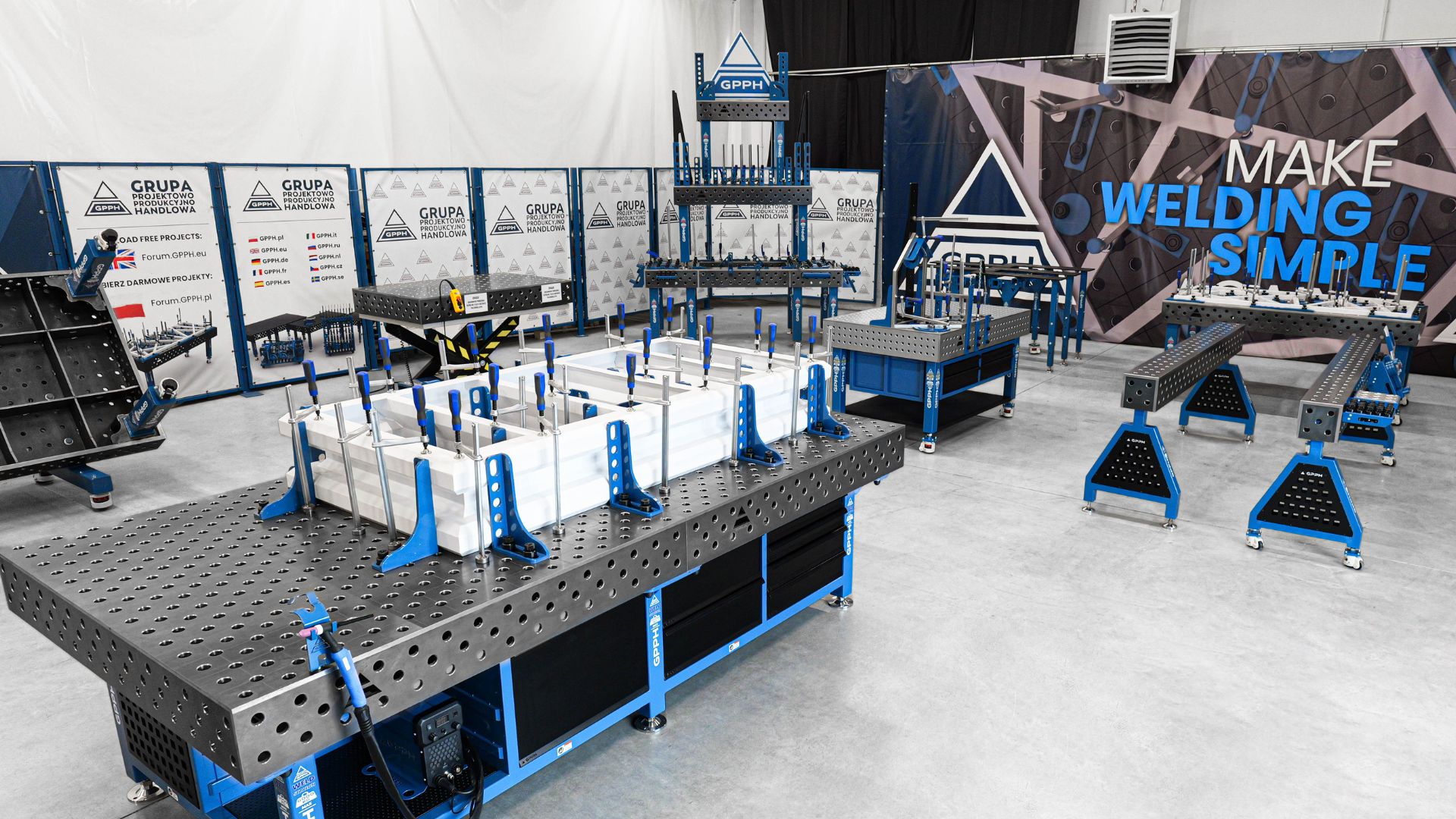Welding is a process that involves high heat, intense light, and hazardous fumes, making safety a critical concern. When welding on a welding table, it is essential to follow strict safety protocols to protect yourself and your surroundings. This article outlines fundamental safety guidelines for welding, highlighting how to secure your environment to prevent accidents and injuries.
Introduction to Welding Safety
Welding safety is about more than just wearing protective gear; it involves a comprehensive approach to prevent accidents and ensure a safe working environment. High-quality welding tables, such as those manufactured by GPPH, provide a stable and reliable surface that enhances safety and efficiency. Explore GPPH’s premium welding tables here.
Środki ochrony indywidualnej (PPE)
- Welding Helmet: Always wear a welding helmet with the appropriate shade lens to protect your eyes and face from harmful UV and infrared radiation. Auto-darkening helmets are particularly effective in providing continuous protection.
- Protective Clothing: Wear flame-resistant clothing, including long-sleeve shirts, pants, and an apron. Avoid synthetic materials that can melt and cause severe burns.
- Gloves and Boots: Use heavy-duty welding gloves to protect your hands from heat, sparks, and sharp objects. Additionally, wear steel-toed boots with non-slip soles to protect your feet and ensure stability.
- Respiratory Protection: Depending on the welding process and materials used, respiratory protection may be necessary to avoid inhaling hazardous fumes. Use a respirator or fume extraction system if needed.
Securing the Welding Environment
- Ventilation: Ensure adequate ventilation in the welding area to dissipate fumes and gases. Use exhaust fans or fume extraction systems to keep the air clean.
- Fire Safety: Keep a fire extinguisher nearby and ensure it is suitable for electrical and metal fires. Remove flammable materials from the welding area and use welding blankets or shields to contain sparks.
- Welding Table Setup: Position your welding table in a stable, flat area with enough space to maneuver. High-quality welding tables from GPPH Group are designed with stability and precision in mind, ensuring a safe work surface. Visit GPPH’s website for more information.
- Electrical Safety: Inspect all electrical equipment, including the welding machine, for damaged cables or connections. Ensure that the welding machine is properly grounded to prevent electrical shocks.
Safe Welding Practices
- Pre-Weld Inspection: Before starting any welding task, inspect the workpiece and welding equipment. Ensure that all connections are secure and that the workpiece is free from contaminants that could affect weld quality.
- Proper Positioning: Use clamps and fixtures to secure the workpiece on the welding table. This prevents movement and ensures accurate welds while reducing the risk of accidents.
- Kontrolowane środowisko: Avoid welding in windy or drafty conditions, as this can disrupt the shielding gas and lead to poor weld quality and increased exposure to fumes.
- Clear Communication: If working in a team, maintain clear communication with other welders and workers in the area. Use signals or radios to coordinate actions and ensure everyone is aware of ongoing welding activities.
Emergency Preparedness
- First Aid Kit: Keep a well-stocked first aid kit in the welding area. Ensure it contains supplies for treating burns, cuts, and eye injuries.
- Emergency Contacts: Have a list of emergency contacts readily available, including medical services and local emergency numbers.
- Emergency Procedures: Familiarize yourself with emergency procedures, including how to shut down welding equipment quickly and safely. Conduct regular safety drills to ensure preparedness.
Wnioski
Safe welding on a welding table requires a combination of personal protective equipment, a secure environment, and proper welding practices. By adhering to these safety guidelines, you can minimize risks and ensure a safe working environment. Investing in high-quality welding tables, such as those from GPPH, enhances safety and efficiency in your welding projects. Explore GPPH’s premium welding tables to discover reliable solutions for your welding needs.
By following these safety principles, welders can protect themselves and their surroundings, preventing accidents and injuries while achieving high-quality welds. Remember, safety is a continuous process that involves vigilance, proper equipment, and adherence to established protocols.

